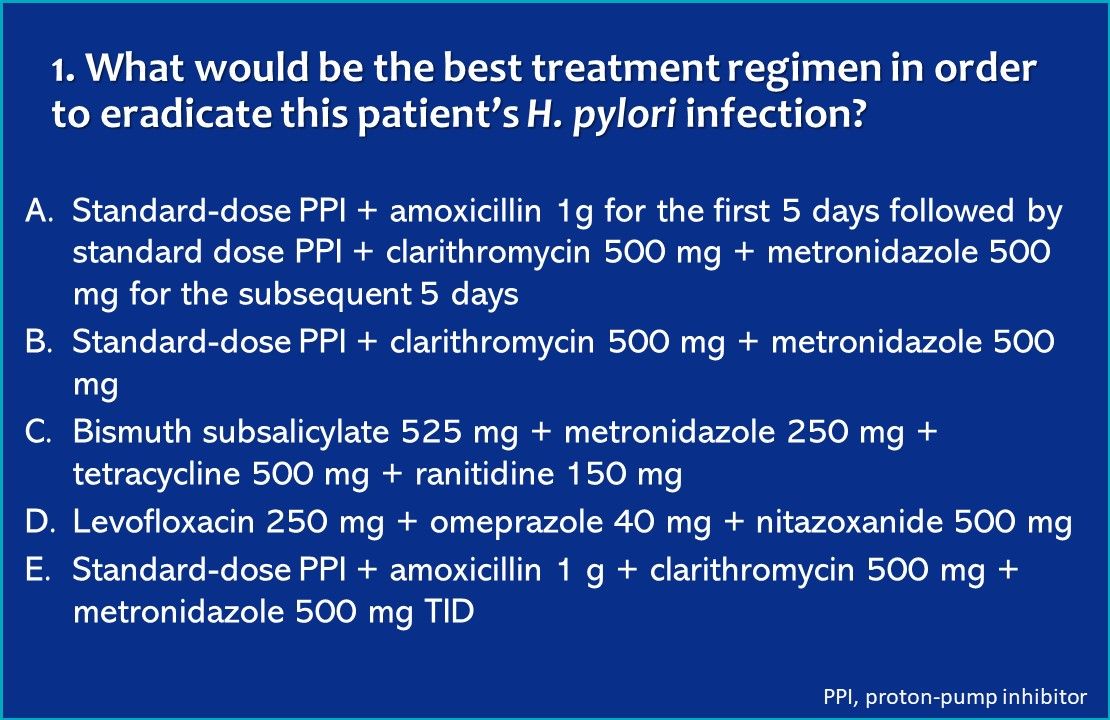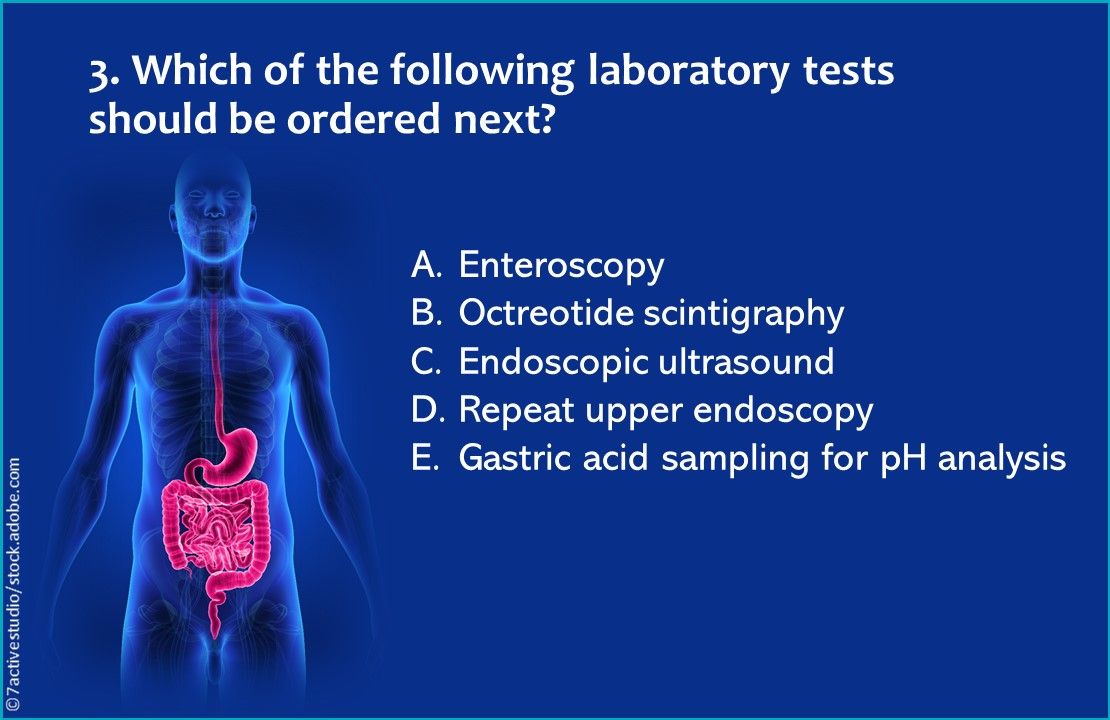© 2025 MJH Life Sciences™ , Patient Care Online – Primary Care News and Clinical Resources. All rights reserved.
Gastric Distress: 3 GI Case Challenges
H. pylori, penicillin allergy, gastrin 1000 pg/mL, recurrent duodenal ulcer, and more. Meet 3 new patients and decide the next steps.
Ted W. James, MD is a fellow in the division of gastroenterology and hepatology in the department of medicine at UNC School of Mecdicine in Chapel Hill, NC. Â Â
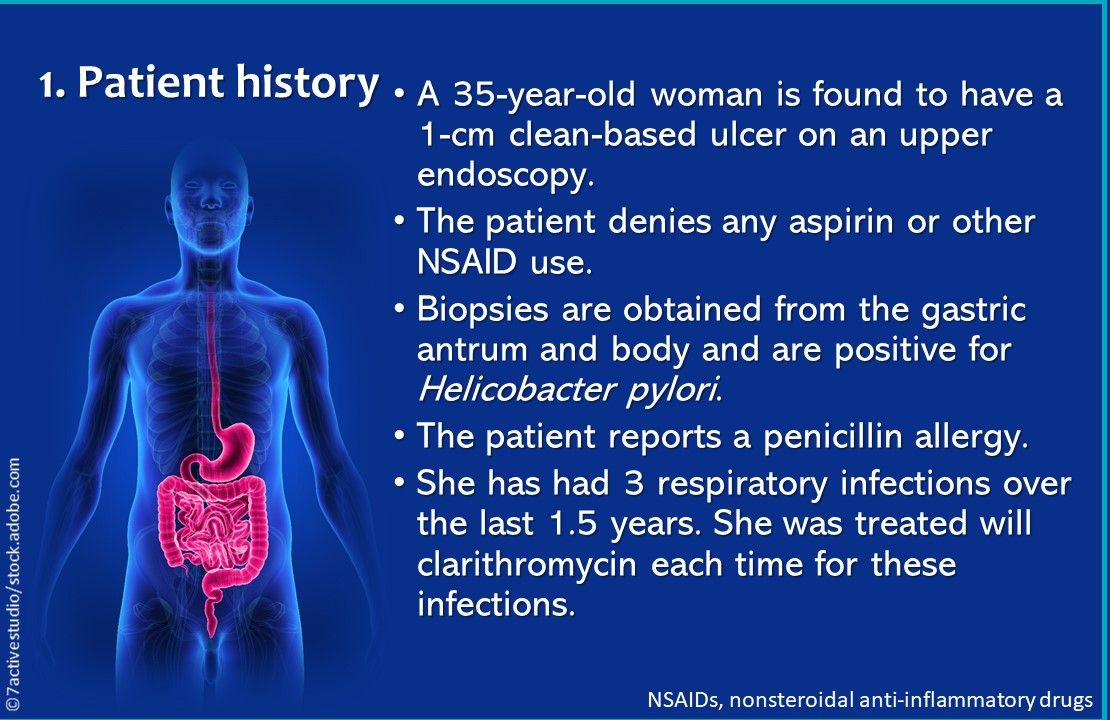
Patient history. A 35-year-old woman is found to have a 1-cm clean-based ulcer on an upper endoscopy. Gastric biopsies are positive for H. pylori. She is allergic to penicillin and has been treated with clarithromycin for URI three times in the last year and a half.
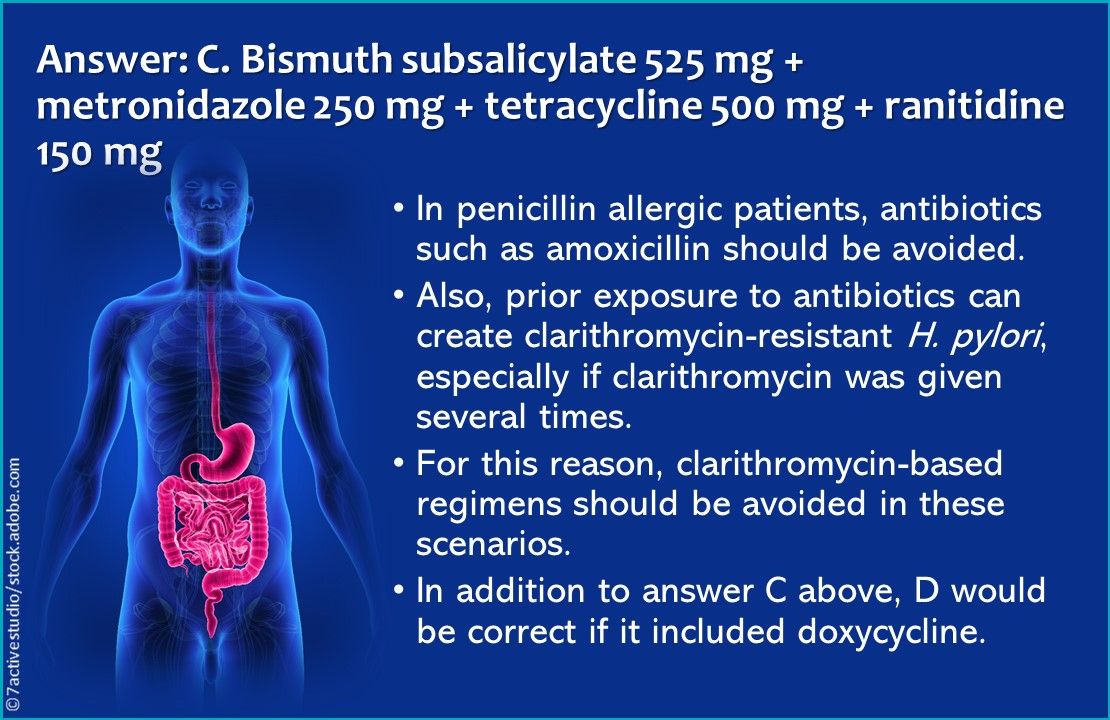
Answer: C. Bismuth subsalicylate 525 mg + metronidazole 250 mg + tetracycline 500 mg + ranitidine 150 mg. In penicillin allergic patients, antibiotics such as amoxicillin should be avoided. Also, prior exposure to antibiotics can create clarithromycin-resistant H. pylori, especially if clarithromycin was given several times.
FYI: Patel KA, Howden CW. Update on the diagnosis and management of Helicobacter pylori infection in adults. J Clin Gastroenterol. 2015;49:461-7.
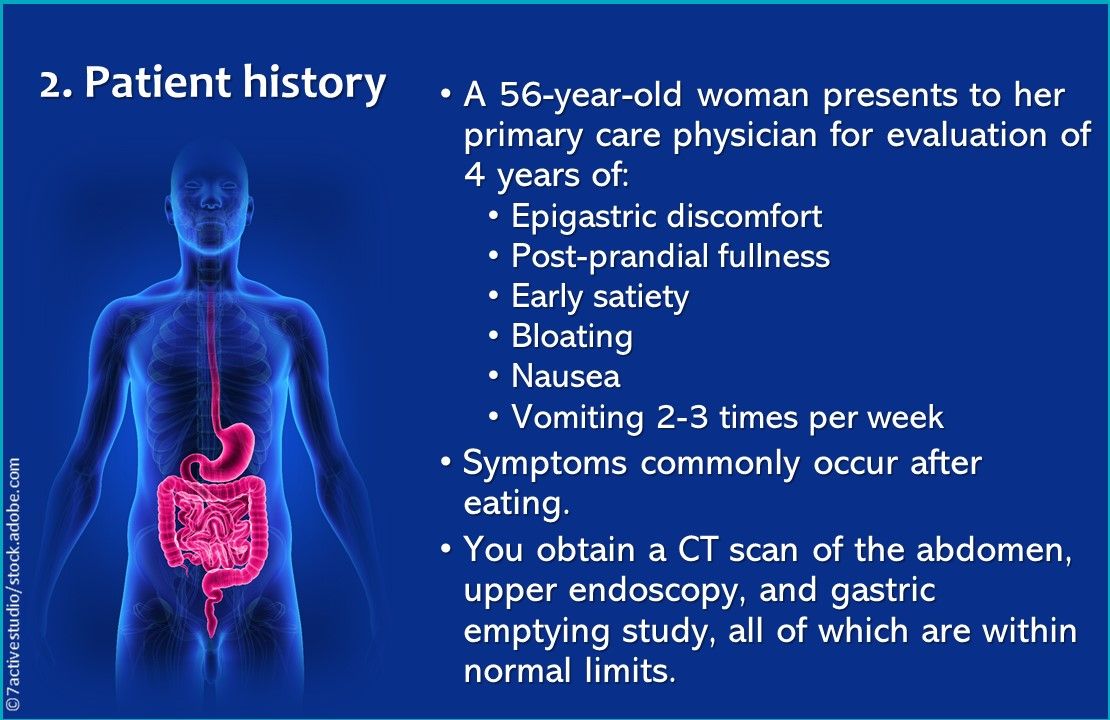
Patient history. A 56-year-old woman presents to primary care for evaluation of 4 years of: Epigastric discomfort
ppost-prandial fullness, early satiety, bloating, nausea, vomiting 2-3x/week. Results of all relevant testing/imaging are within normal limits.

Answer: B. Epigastric discomfort. Dyspeptic symptoms are very common in the general population. For most patients, the hierarchy of response to acid suppression therapy (from most to least) is the following order: Epigastric discomfort, early satiety, bloating, nausea, vomiting.
FYI: Gerson LB, Kahrilas PJ, Fass R. Insights into gastroesophageal reflux disease-associated dyspeptic symptoms. Clin Gastroenterol Hepatol. 2011;9:824-33.
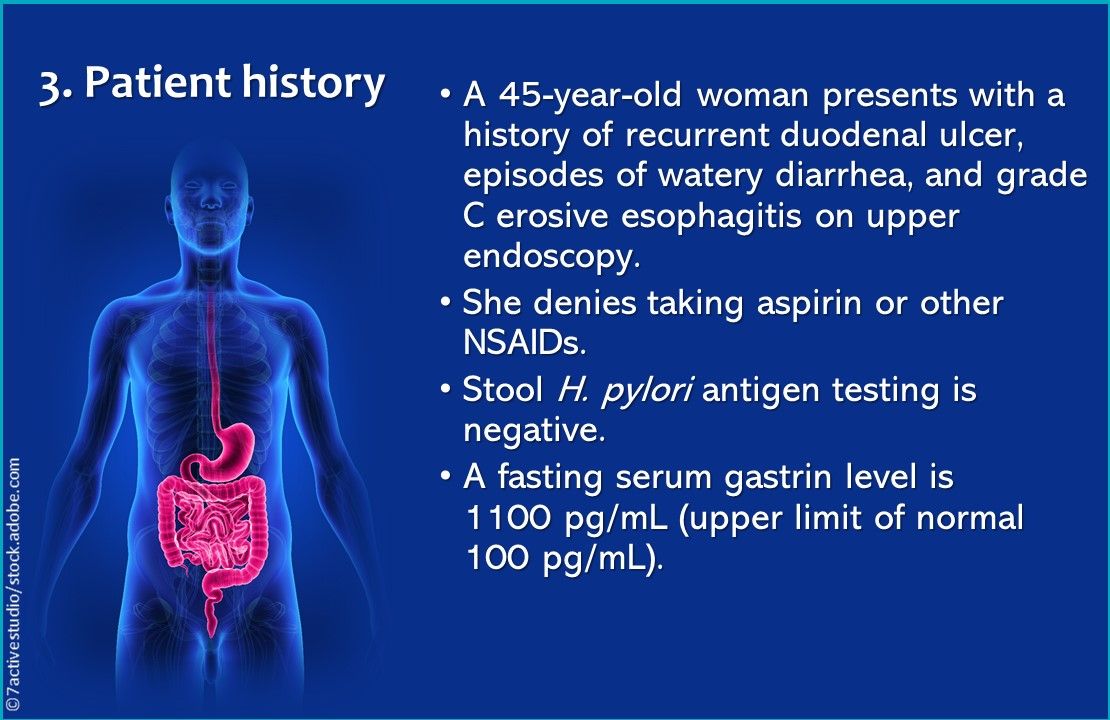
Patient history. A 45-year-old woman presents with a history of recurrent duodenal ulcer, episodes of watery diarrhea, and grade C erosive esophagitis on upper endoscopy. Stool H. pylori antigen testing is negative.
A fasting serum gastrin level is 1100 pg/mL (upper limit of normal 100 pg/mL).
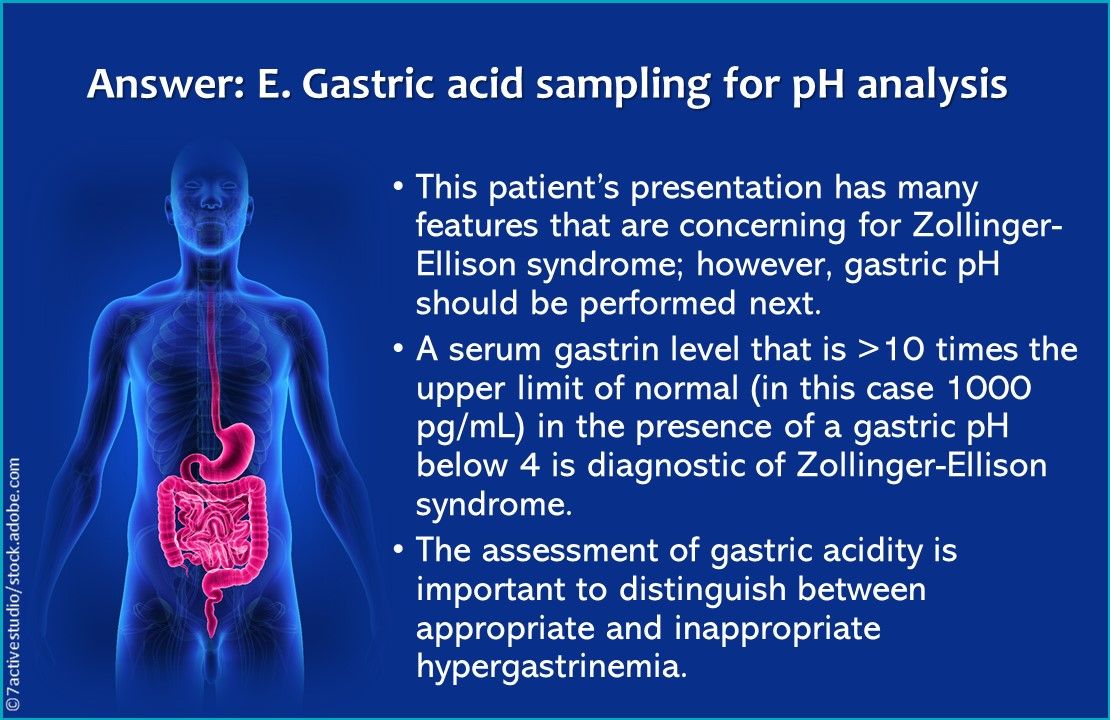
Answer: E. Gastric acid sampling for pH analysis. This patient’s presentation has many features that are concerning for Zollinger-Ellison syndrome; however, gastric pH should be performed next. A serum gastrin level that is >10 times the upper limit of normal (in this case 1000 pg/mL) in the presence of a gastric pH below 4 is diagnostic of Zollinger-Ellison syndrome.


